Stand mixer test
We learned in my first bread test (a bread flour brand showdown) that even the brand of bread flour can change the outcome of our loaf of bread. If a brand of flour can change the outcome, what about a brand of stand mixer? Is there a best stand mixer for bread?
In all of these bread tests, I used my Classic Sandwich Bread recipe – a recipe I have used for years and make weekly. It’s simple, tried and true, and one that I am beyond familiar with, so it felt like a perfect one to test some variables on. All of these tests are NOT sponsored by any of the brands.
*I do have a discount code later on in the post for Bosch Mixers, but due to my own request. They did not ask or pay for the placement.
I tested 3 popular mixers currently on the market:
- Kitchen Aid
- Bosch Universal Mixer
- Ankarsrum
I’ve used my sandwich bread recipe with each of these mixers before, so I had some guesses, but I knew I side by side test was the only way to really know.
**Note: I was specifically critiquing to see if there is a best stand mixer for BREAD. There are of course SO many other things you can do with a mixer, and it’s important to take that into consideration, so my rankings below are considering bread as the primary use case. Check out Orson Gygi’s review on stand mixers as they tested these same mixers on additional items (frostings, cookies, macarons, etc.).
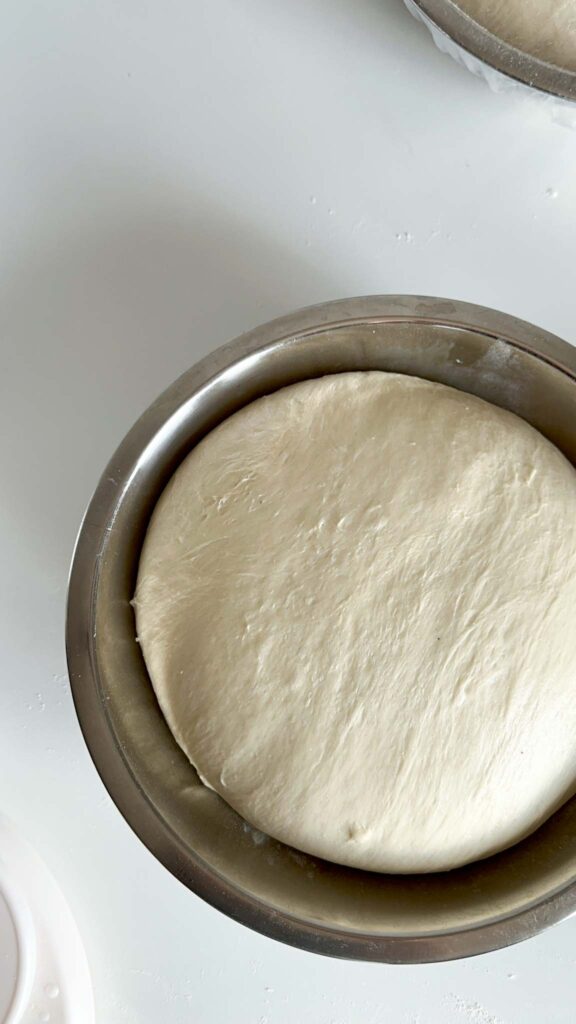
sTAND MIXER test rules
Just like my bread flour test, I completed the test ensuring every variable stayed the same, except for the mixer.
- Identical weighed ingredients
- Kneaded at same time
- Proofed at same time and temperature
- Baked in same oven
- Baked in same kind of loaf pan
PROCESS & RESULTS video
Mixer results
The results are one thing, but it was also the process that was helpful in deciding which was “the best”, so be sure to watch the video above for a complete synopsis. I go through a whole pros/cons list of each mixer at the end.
Below is a picture of each loaf. Can you tell a difference? We ranked each one by category:
HIGHEST LIFT:
1. Ankarsrum
2. Bosch & Kitchen Aid tied
MOST OPEN CRUMB STRUCTURE:
1. Ankarsrum
2. Bosch
3. Kitchen Aid
EASIEST TO USE:
1. Bosch
2. Kitchen Aid
3. Ankarsrum
EASIEST TO CLEAN:
1. Kitchen Aid
2. Ankarsrum (very close tie to #1)
3. Bosch
BEST WATTAGE, MOTOR, & WARRANTY:
1. Ankarsrum (600 watt, belt driven, 7 year war.)
2. Bosch (500 watt, belt driven, 3 year war.)
3. Kitchen Aid (275-500 watt, gear driven, 1 year war.)
BEST “VALUE” (cost vs. performance):
1. Bosch
2. Kitchen Aid
3. Ankarsrum
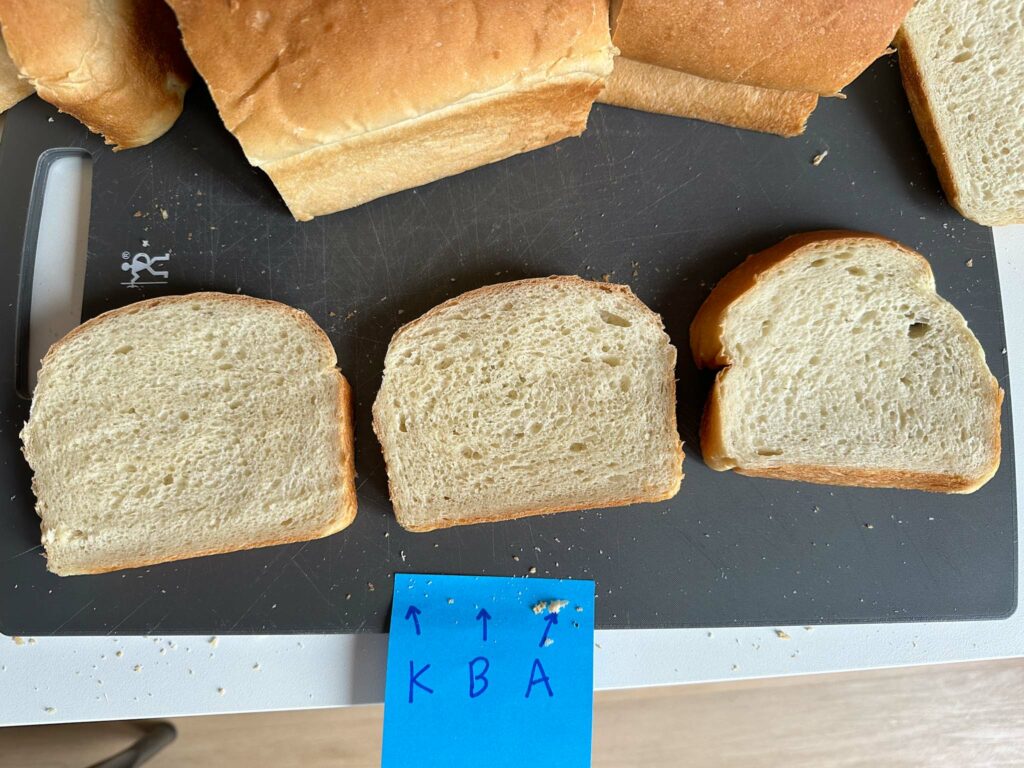
how can a mixer make a difference?
It might seem funny at first wondering how a mixer could make a difference. I mean, don’t they just all mix?
Kneading is a very critical part of bread making. It’s the consistent, gentle motion that creates a scientific reaction. It activates the gluten network, allowing the gluten to build structure and strength in the dough which in turn, impacts the end texture and crumb density (in other words, how big of holes are in the bread, and how spread out they are).
Each mixer is designed very differently, and HOW the dough is mixed – both due to its motion and speed – can change that structure. Let’s briefly compare the design of each:
- Kitchen Aid: It’s standard hook creates a classic circular motion. The issue I’ve found is it doesn’t seem to give the dough a full rotation and not all the dough seems evenly kneaded. For me, there’s always been a portion of dough stuck to the bottom, making the whole dough look sticky. Not only does this mean that portion doesn’t get kneaded as well, but people usually think they need to add more unnecessary flour, which can result in a tougher bread. By no surprise, this loaf seemed to have the tightest crumb structure AND the process was most frustrating to me for bread making. Where the arm and the bowl meet is very narrow, making it a huge mess when adding flour.
- Bosch: I love the open bowl concept with this mixer. It makes it SO much easier to add flour during the mixing process, and its full rotation design yields a more even kneading process. I also love how easy a Bosch is to use – less scraping of the bowl and hardly any babysitting.
- Ankarsrum: This unique design differs from the other two in that the BOWL is the feature that rotates, instead of any arm or hook. It also has the open bowl making it very easy for adding ingredients. This Swedish brand is known for its design that mimics the motion of hand kneading, which means the dough won’t be prone to be being overworked. This gives the bread a tender outcome with slightly more lift.
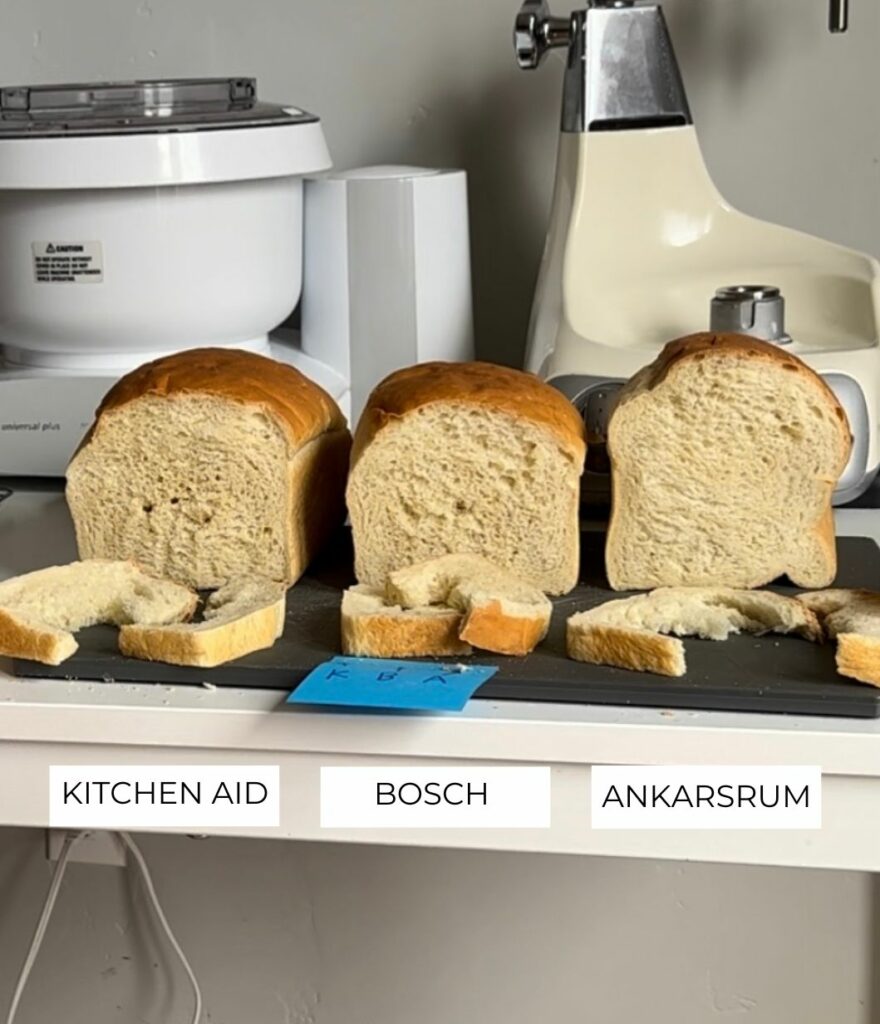
summary
Again, the video above really explains the details the best, but in summary, here was our conclusion on the battle of the mixers.
TASTE:
In a blind taste test, the differences seemed nominal. I did sense one was slightly the most tender, which was the Ankarsrum, but when I made my husband test it blind (and he’s usually my most helpful critic), he said he couldn’t tell a difference. So even though Ankarsrum had the most visible lift and technically most notable crumb structure, when it came down the actual eating, you may or may not notice subtle differences depending on how particular you are.
EXPERIENCE:
After judging taste, my mind went to the experience of using the mixer next. For me, this was without a doubt, the Bosch Universal Mixer. It was by far the easiest to use. Had the least amount of babysitting with the dough and the least scraping of the bowl. The Ankarsrum has more of a learning curve in the beginning, and it did feel like there was more babysitting of moving the knob and scraping the bowl. However, people who use this mixer regularly say that once they got used to it, they love it and won’t ever go back. The Kitchen Aid was the most frustrating for bread making due to its design and mixing function.
PRICE & QUALITY:
> Bosch takes it home for me for that perfect balance of cost & quality compromise. Sits at $350-$400 (depending on the sale…and it goes on sale often!) with a 3 year warranty and strong belt driven motor. For an at-home baker who bakes frequently, this is a no-brainer for that “best value” shopper looking at budget, ease, and quality.
> Kitchen Aid has a gear system, which has been critically reviewed as a lesser system. It also only has a 1 year warranty. It does a great job though, and I still love using this mixer for frostings, meringues, and smaller batch items. I think there’s no shame in using a Kitchen Aid for a wide variety of normal at-home baking.
> Ankarsrum has the largest bowl capacity, longest warranty (7 years!), and a ton of fun attachments and mixer colors. It is no doubt, an elite high performing mixer. The two draw backs for me were #1: Cost and #2: Learning Curve. It did take a bit of babysitting with the dough, and the process is the most unique, meaning it does have the largest learning curve. People who get familiar with it though LOVE IT. It does sit at a price point of $750 which I think is hard for the average home baker to swallow. If it’s in budget, you are bake frequently, and aren’t afraid of the learning curve, I don’t think you will regret it!
Bosch Discount Code:
Because of its
1. Consistent performance
2. Easy of use &
3. Affordable price point…
It makes a Bosch Universal Mixer a fantastic choice for most home bakers. Without any push from Bosch, I asked them for a discount code due to my strong personal recommendations. Luckily they agreed! So while this is an affiliate link, it comes at no extra cost to you. By using this discount and link, you help support further tests in my kitchen.
– – – SHOP HERE & USE CODE “LOSKITCHEN” FOR A DISCOUNT – – –
Regardless of what mixer you have, this test proved you can have amazing results. I always recommend that people consider:
- The primary use case for the mixer (small batches, bread, cakes?)
- Comfort level with new devices
- Budget
Happy baking!

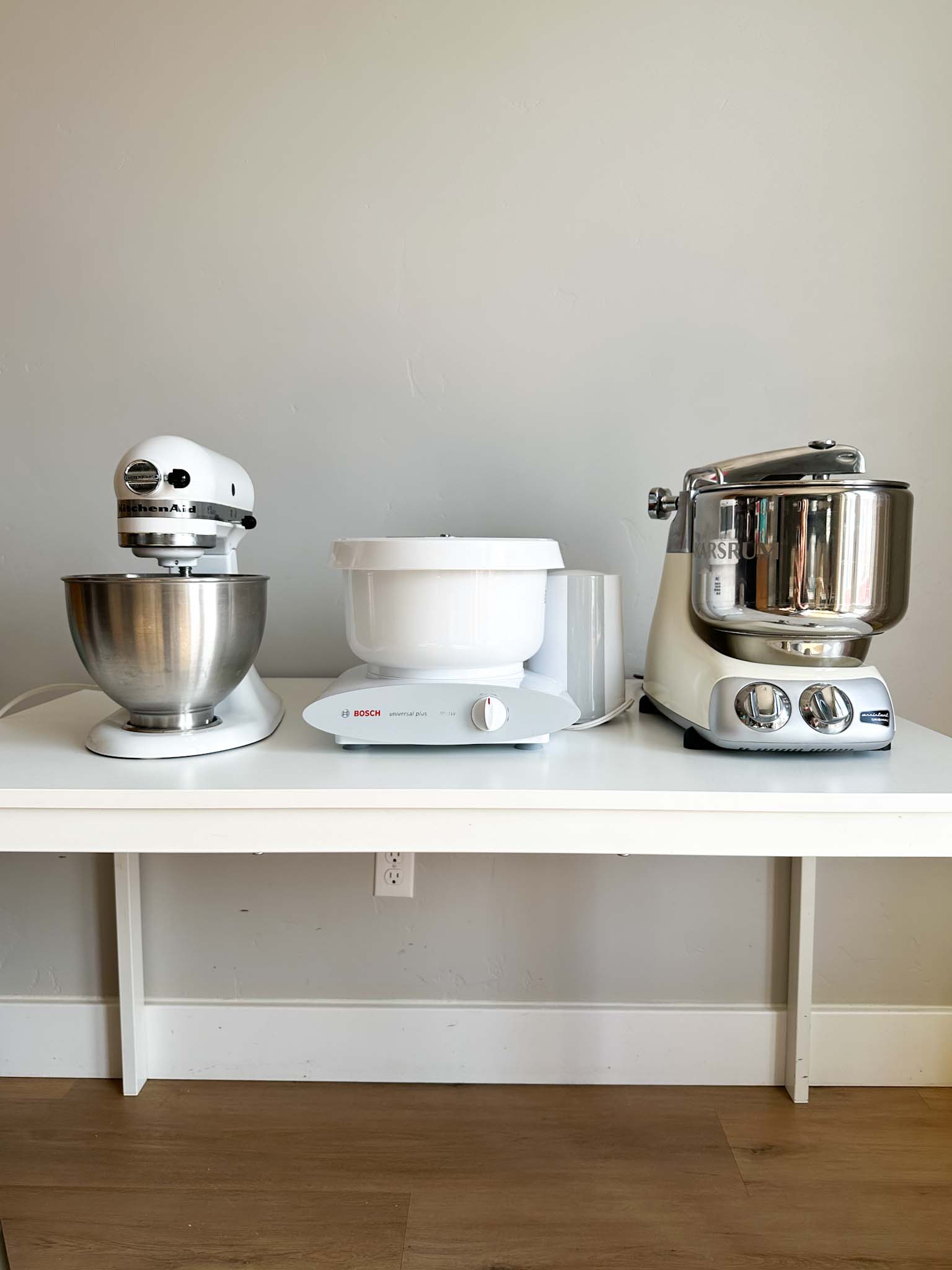
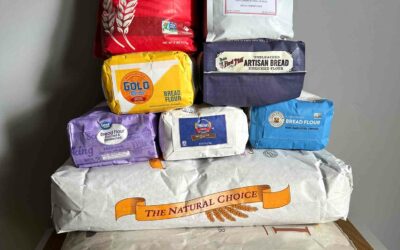
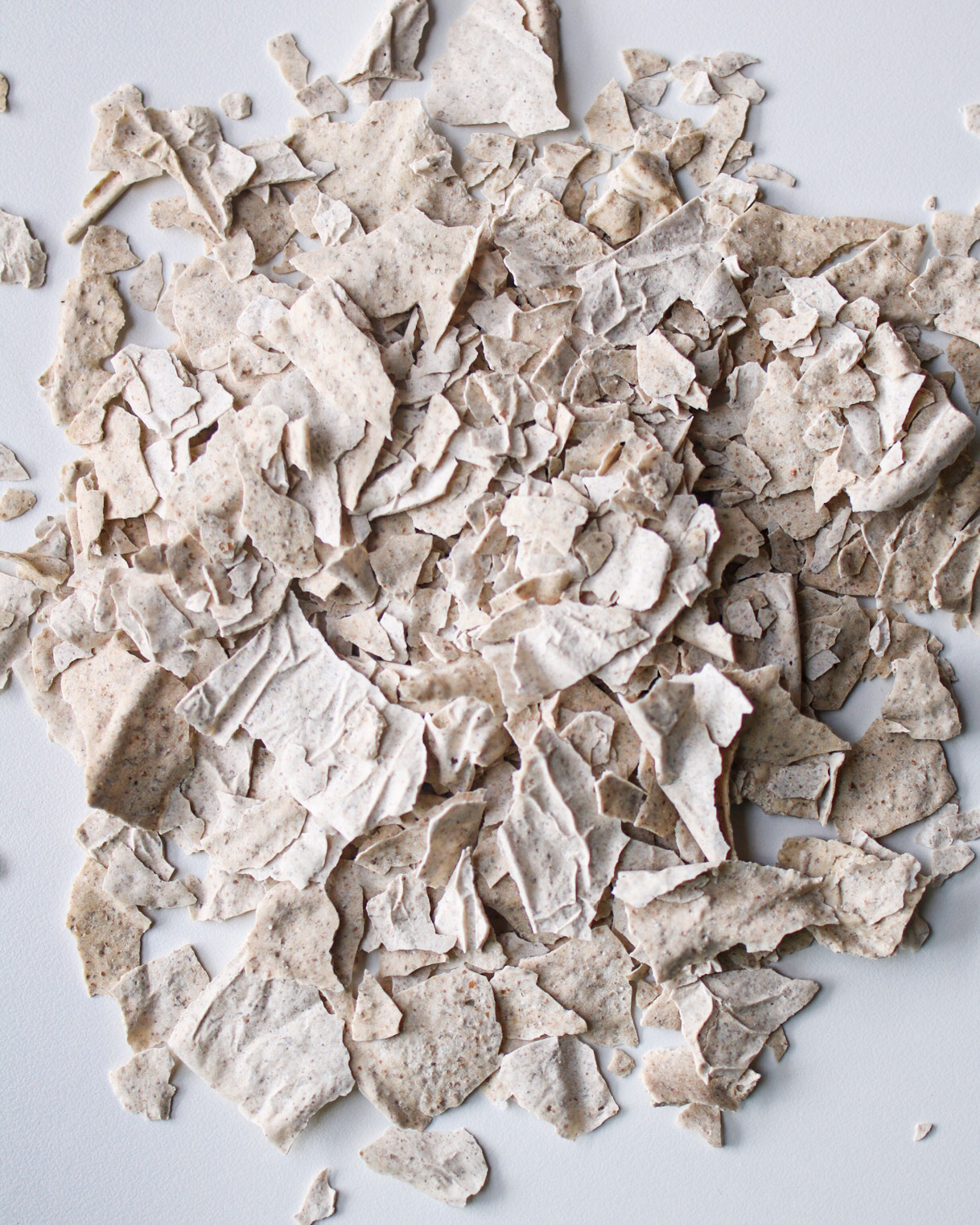

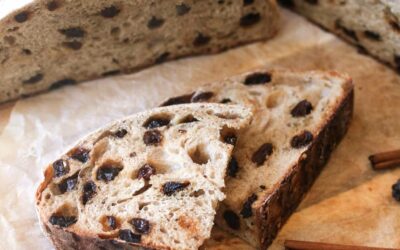
With the Ank, did you use the dough hook or the roller?
I use the roller! Unless you’re using an extremely stiff dough, you’ll want to use the roller!
I have had a kitchen for quite a while now. I would find inconsistency when kneading dough. I bought a Bosch in November and have moved the kitchen aid out of the kitchen. The ease of adding ingredients, bowl size and overall mixing and kneading has helped in time, effort and overall consistency of whatever I am using it for!
Totally! Love my Bosch and the ease of it. Not to mention it’s so affordable for a stand mixer!
I found by the time I ordered stainless steel parts for the Bosch, it was more than the Ank that comes with stainless steel! The Ank is a great investment and if you watch videos before you start there’s no learning curve! I’ve had mine a year. I love it!
So glad you’re loving the Ank! It’s such a good mixer! Good advice on watching videos. For the standard Bosch you don’t have to buy anything extra to have a great mixer. I’ve always used just their normal kit without a bunch of add-ons. So I just wanted to note that for other readers so they know they can still have a great mixer for half the cost if that’s what’s in their budget. Happy baking!